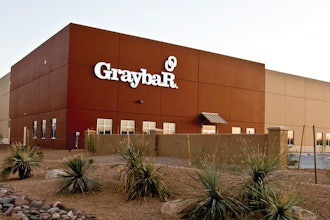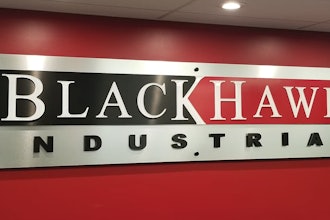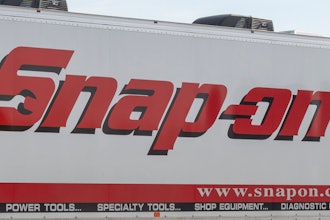A resident of Asharoken, NY, Greg Polli is Vice President of Product Management for MSC Industrial Direct, bearing responsibility for strategic positioning of product categories and brands through all MSC Direct channels. He has been with the company for twenty years, holding a number of titles ranging from Product Manager to Strategic Business Unit Manager to his current position. A graduate of Hofstra University with a BA in Marketing, he has served on the ISMA Board of Directors and is currently on the ISA Board of Directors. MSC Industrial Supply has 96 branches and four major Customer Fulfillment Centers strategically located throughout the United States. For more information, visit www1.mscdirect.com.
Q: How has the supply chain changed for manufacturers, suppliers, and distributors, based on recent difficult economic conditions?
A: The recent economic crisis has obviously had an effect on most companies around the world. The credit crunch, along with instability and uncertainty, has temporarily reshaped how business is done and some of those changes may prove to be permanent.
As demand has dropped off in many areas, manufacturers are facing increased pressure for high quality service. Competition is fierce and many customers are willing to shift brands if they perceive more value for their money from a competitor. Likewise, this same mentality is pushing prices down and reducing profit margins. While always important, ingenuity and innovation are becoming necessities to remain viable and profitable. Furthermore, all parties in the supply chain are attempting to minimize the amount of stock kept on-hand. End-users still want to receive products in a timely manner, though. This places a huge burden on manufacturers to streamline their operations to minimize turnaround times.
Suppliers have been significantly impacted by the cost of storing larger inventories. With the unpredictability of the market, many of their purchasers are taking a leaner approach to their processes. These initiatives include delaying the order of materials until they are needed while continuing to demand short turnaround times from suppliers. There is also substantial pressure on prices. Suppliers must be diligent in managing inventory and maintaining financial health, as customers will be quick to move to a competitor if weakness is perceived.
Distributors are seeing profit margins suffocated from the top and bottom. Their costs of goods are rising, even as customers demand lower prices. Despite this, some distributors have experienced stronger cash flows by significantly reducing the amount of inventory kept on-hand.
Q: What types of changes should manufacturers anticipate in the near- and long-term?
A: In the near future, many of the challenges of the last six months will persist. Cost pressure will continue, as will top line volume pressure. Combined, these will make it difficult for many companies to maintain a healthy level of profitability.
When the current economy turns around, and it will, manufacturers will face immediate pressure in the other direction. The challenge will quickly become meeting customer delivery dates and sourcing raw materials. To prepare for this, manufacturers must ensure that they position themselves for the turnaround in a way that capitalizes on the ‘new’ market that will emerge. Companies will not simply hire back the employees they have laid off during this downturn. They will instead utilize better technologies that are available, both in product application and their supply chain. This will change how they are structured and what they buy when business picks back up. Foreseeing and planning for this will be vital to manufacturers that wish to capitalize on the rebound.
Q: How would you define ‘strategic sourcing’ and what is the best way to initiate it?
A: There are two aspects to strategic sourcing. The first is understanding every aspect of a product, including such areas as raw materials, manufacturing time, quality drivers, packaging, and freight costs. Secondly, a company must determine where and how to procure that product. This encompasses which countries to consider, the suppliers within those countries, and how to bring it through the supply chain. Performing these tasks appropriately will drive a company towards the highest possible quality and lowest possible cost.
The best approach to initiating strategic sourcing comes down to a ‘build it or buy it’ decision, depending on company size. For a company with large volumes, it often makes sense to assemble a team of sourcing professionals around the world and build their own system. Smaller businesses must carefully select and rely on other companies with the capabilities to support their strategic sourcing efforts.
Increasingly, suppliers are expanding their efforts to assist customers in strategic sourcing. For instance, MSC has initiated a CPI (Category Profit Improvement) program that focuses on evaluating product groups. Based on the findings of the CPI, actions are taken to maximize the value and savings of customers.
Q: What types of investments would you recommend manufacturers make?
A: As previously stated, when the economy rebounds, many business models will change. Manufacturers need to invest in technologies that will position them to take advantage of this evolution.
Q: Where should they curb spending?
A: All non-value-added spending should be reduced or eliminated. This is always true, but especially important in the current environment.
Additionally, there are still quite a few manufacturers ‘dabbling’ in other product categories. This often wastes valuable capital that could be invested in more profitable endeavors. Companies must determine their core competencies and then focus on besting the competition in those areas. Any move into another area should be carefully evaluated and then implemented, as opposed to merely trying something to see if it works.
Q: In what types of ways have smart distributors changed their business strategies in this economy?
A: In relation to manufacturers, smart distributors are investing in technologies to be prepared for the new market that will emerge from this crisis. Additionally, distributors with a strong cash position have incredible buying opportunities right now. Acquisitions and strategic hires that would not be possible in a strong economy are currently available. Smart distributors are considering their options and also driving foundational changes that will position them for success when the market improves. These include data improvements, category/merchandising improvements, strategic pricing, and customer acquisition.






















